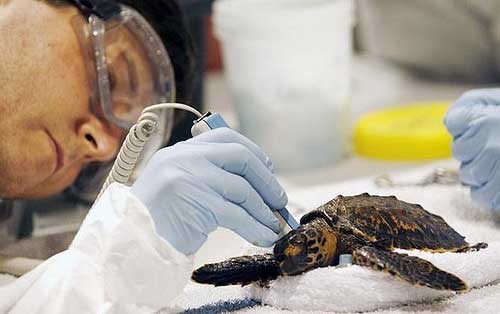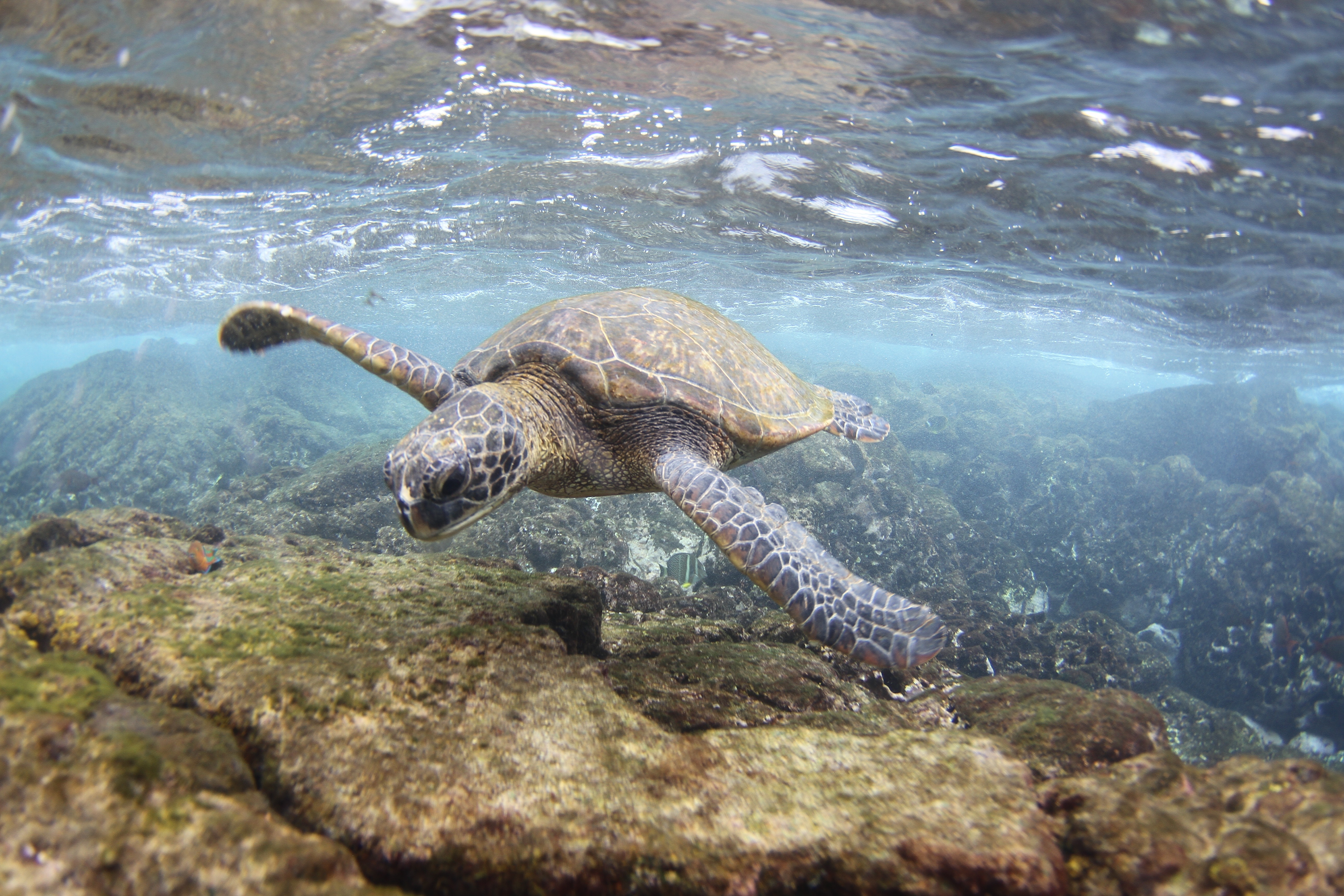How to Help Sea Turtles This Earth Day
Published by Ocean Conservancy
This year, the Earth Day network is asking people to Protect our Species and raise awareness of the thousands of species that are endangered. With climate change, pollution and overfishing, we are seeing dramatic declines in populations, specifically in some of our most charismatic ocean species— sea turtles.
Besides being an ocean favorite, sea turtles play a crucial role in maintaining a healthy ecosystem. They help cycle nutrients that keep seagrass happy and healthy, which in turn provides a safe and profitable habitat for crustaceans like lobsters and shrimp—that we depend on for food. Sea turtles also keep jellyfish populations in check, which is becoming increasingly difficult as jellyfish thrive in the warmer, de-oxygenated and acidic waters.
Do you love turtles?
So do we! Sign up to receive turtle-y awesome updates!
Among the seven sea turtles species, six are considered vulnerable or endangered due to human actions. We don’t know enough about the seventh (flatback sea turtles) to determine their status.
One of the most visually disastrous effects on sea turtle populations has been caused by reckless, offshore oil drilling.


The month of April also marks the anniversary of the BP Deepwater Horizon oil disaster. Nine years ago, the oil rig exploded in the Gulf of Mexico, killing hundreds of thousands of sea turtles, while more than 28,000 eggs were relocated from their nests to hatch on safer, unoiled beaches.
This was a devastating blow to Gulf sea turtle populations—those that not only suffered from the risky business of oil, but face additional stressors like plastic pollution, being caught as bycatch and coastal development.
Fortunately, BP was forced to pay $20 billion for the damage they caused to the Gulf, which launched a discussion throughout the region on how better to protect wildlife, including sea turtles, and more broadly how to restore the entire ecosystem of the northern Gulf of Mexico.
While there are so many organizations and researchers who are working hard to make a difference in sea turtle conservation, these projects are a testament to the great strides being made:
- Improving Habitat Injured by Spill Response: Restoring the Night Sky
Funded under the Natural Resources Damage Assessment, this project aims to reduce disturbance to nesting loggerhead sea turtles by reducing and/or replacing light sources (that confuse nesting sea turtles and their hatchlings) and by working with both the public and government to ensure proper education and compliance of these measures. - Sea Turtle Early Restoration Project
Also funded under the Natural Resources Damage Assessment, this project aims to enhance two NOAA programs: the Gear Monitoring Team and the Shrimp Trawl Observer Program. The project goal is to develop emergency responses for sea turtle stranding and salvage, reduce Gulf of Mexico shrimp trawl bycatch and reinforce fisheries bycatch in Texas. - Improving Sea Turtle Hatchling Survivorship through Long-Term Predation Management
A recipient of the National Fish and Wildlife Foundation Gulf Environment Benefit Fund, this Florida-based project will establish a long-term sea turtle nest predation management program to help increase the rate of nest survivorship and hatchling production—specifically among green and leatherback turtles.


But it’s not just scientists and researchers who can make a difference for sea turtles—you can too! By picking up after yourself when you go to the beach, taking proper measures to recycle and reduce single-use plastics (like straws), supporting conservation work and speaking up to support funding for agencies like NOAA that work to protect sea turtles.
The post How to Help Sea Turtles This Earth Day appeared first on Ocean Conservancy.
Read the full article at: https://oceanconservancy.org/blog/2019/04/18/help-sea-turtles-earth-day/


